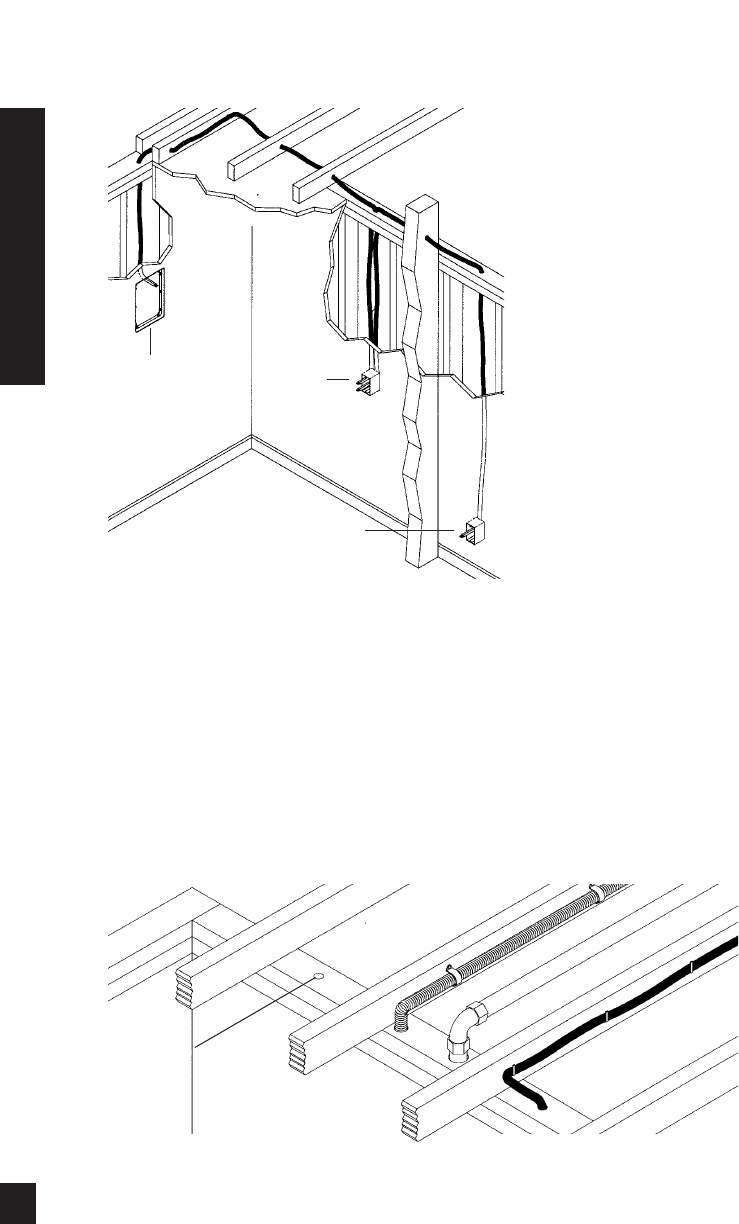
Identify where all of your electrical,
phone, and TV wiring is likely to be and
plan to route around it all. You can acci-
dentally induce 60 Hz hum on your
speakers if you run your speaker wire right
beside electrical wire for more than a few
feet. Try to keep speaker wire running par-
allel to power cables at least 3 feet away.
To find exactly where an electrical cable is
routed, try inspecting the inside of the wall
by turning off the breaker for a particular
power outlet or switch, removing the
cover plate and switch or receptacle, and
shining a penlight into the
wall. If you have access to an
attic or basement space you
can quickly see which part of
the wall space is free of
obstructions
(See Figure 5).
When you don’t have access
above or below the wall, try
to estimate the existing wire
and pipe locations from the
positions of electrical outlets
and plumbed fixtures on both
sides of the wall. Take a look
at the outside of your house
too, sometimes conduit, vents
or drain pipe will be visible
that give useful information.
Choose the route with the
fewest potential obstacles.
If your house is built on a
slab or you are wiring
between two finished floors, look for base-
boards which could be removed and
replaced with the wire behind them.
Doorjambs can be removed and often
have enough space for speaker wire all
the way around the door
(See Figure 6).
Sometimes, an under-the-carpet run is
possible (there are special flat speaker
wires made for under-the-rug wire runs).
As a last resort, heating and air condition-
ing vents can be used as wire raceways for
plenum rated wire (check your local
11
Installation Fundamentals
Figure 4
Figure 5
Unobstructed space
for speaker wiring
Speaker
Location
Volume
Control
Location
Stereo
Location


















